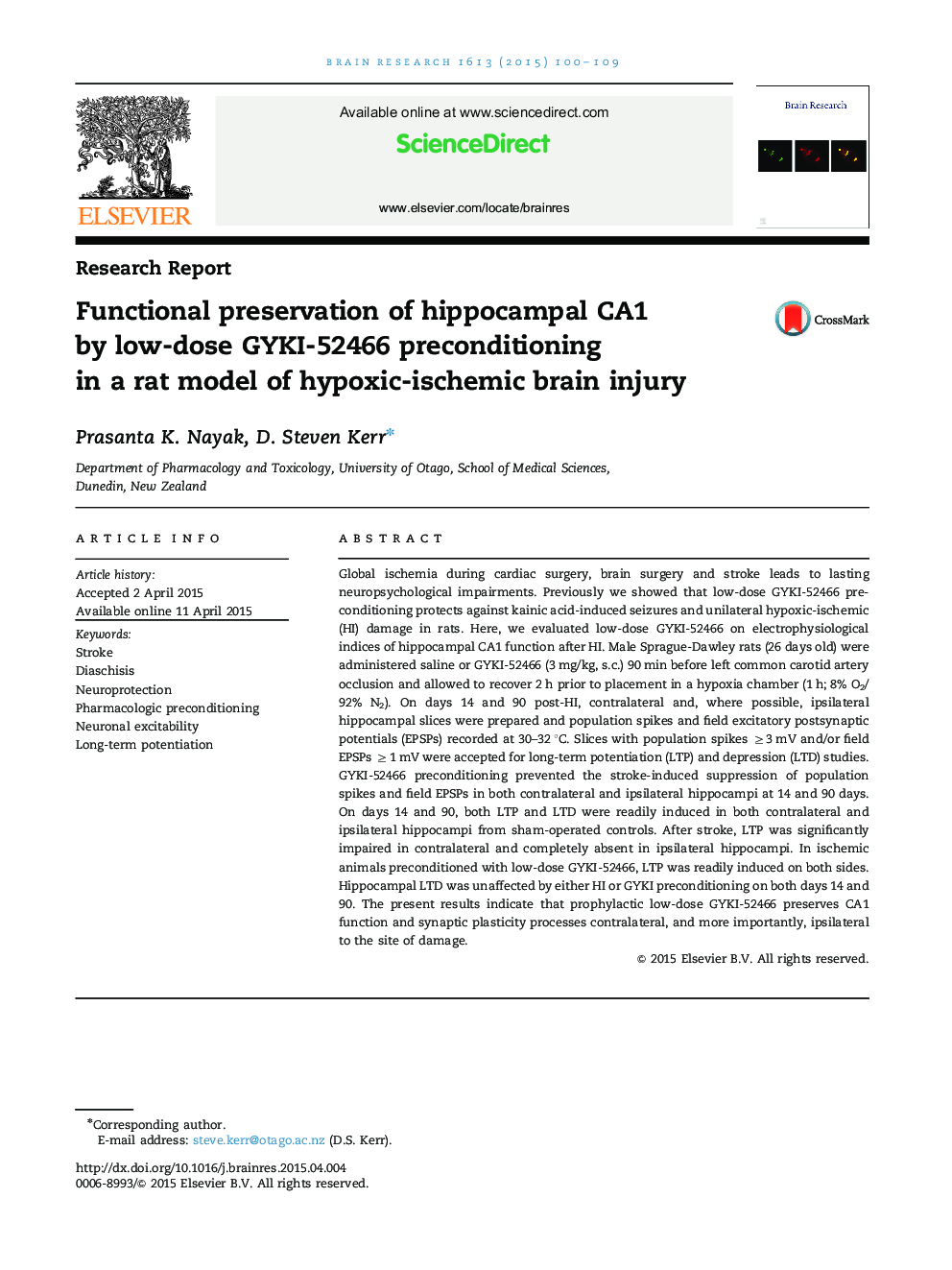| Article ID | Journal | Published Year | Pages | File Type |
|---|---|---|---|---|
| 4323801 | Brain Research | 2015 | 10 Pages |
•Unilateral hypoxia-ischemia (HI) impairs hippocampal CA1 function and suppresses LTP.•Prophylactic low-dose GYKI-52466 prevents HI damage and preserves CA1 function out to 90 days.•Low-dose GYKY-52466 exhibits promise as a prophylactic neuroprotectant against global hypoxia.
Global ischemia during cardiac surgery, brain surgery and stroke leads to lasting neuropsychological impairments. Previously we showed that low-dose GYKI-52466 preconditioning protects against kainic acid-induced seizures and unilateral hypoxic-ischemic (HI) damage in rats. Here, we evaluated low-dose GYKI-52466 on electrophysiological indices of hippocampal CA1 function after HI. Male Sprague-Dawley rats (26 days old) were administered saline or GYKI-52466 (3 mg/kg, s.c.) 90 min before left common carotid artery occlusion and allowed to recover 2 h prior to placement in a hypoxia chamber (1 h; 8% O2/92% N2). On days 14 and 90 post-HI, contralateral and, where possible, ipsilateral hippocampal slices were prepared and population spikes and field excitatory postsynaptic potentials (EPSPs) recorded at 30–32 °C. Slices with population spikes ≥3 mV and/or field EPSPs ≥1 mV were accepted for long-term potentiation (LTP) and depression (LTD) studies. GYKI-52466 preconditioning prevented the stroke-induced suppression of population spikes and field EPSPs in both contralateral and ipsilateral hippocampi at 14 and 90 days. On days 14 and 90, both LTP and LTD were readily induced in both contralateral and ipsilateral hippocampi from sham-operated controls. After stroke, LTP was significantly impaired in contralateral and completely absent in ipsilateral hippocampi. In ischemic animals preconditioned with low-dose GYKI-52466, LTP was readily induced on both sides. Hippocampal LTD was unaffected by either HI or GYKI preconditioning on both days 14 and 90. The present results indicate that prophylactic low-dose GYKI-52466 preserves CA1 function and synaptic plasticity processes contralateral, and more importantly, ipsilateral to the site of damage.
